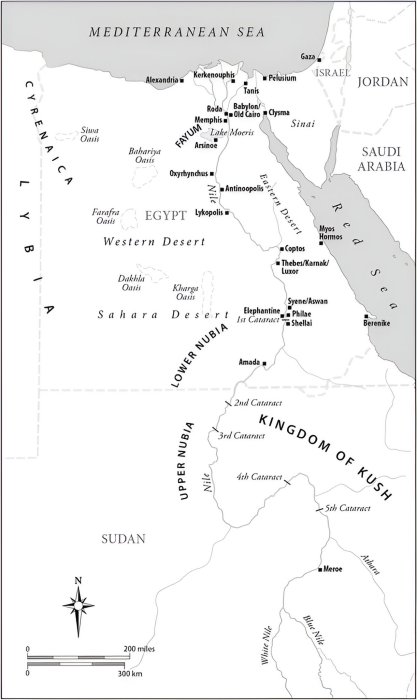Conny Waters – AncientPages.com – Many reports from antiquity about outbreaks of plague mention Egypt as the source of pestilences that reached the Mediterranean. But was this really the case? Researchers from the University of Basel are conducting a critical analysis of the ancient written and documentary evidence combined with archaeogenetic findings to add some context to the traditional view.

The plague of Athens by François Perrier, 1640 – Public Domain
Red and inflamed eyes, bad breath, fever, violent convulsions, boils and blisters over the entire body: these and other symptoms are mentioned by historian Thucydides in connection with the “Plague of Athens,” which lasted from 430 to 426 BCE. He suspected that the epidemic originated in Aithiopia.
“This area isn’t to be confused with the country we now know as Ethiopia, but was a more general term used at the time to refer to the region south of Egypt,” explains Professor Sabine Huebner, Professor of Ancient History at the University of Basel.
Contemporary accounts suggest that later epidemics in the Mediterranean also started in Egypt and Aithiopia, such as the Antonine Plague, the Plague of Cyprian and the Justinianic Plague, which ravaged the ancient world between the second and sixth centuries.
Papyri providing new information
Was Egypt actually a gateway for pathogens spreading into the Mediterranean? Sabine Huebner and postdoc Dr. Brandon McDonald wanted to know more. As part of a project supported by the Swiss National Science Foundation, they searched all available sources from antiquity—in particular papyri—for information about epidemics ᴀssociated with Egypt. They recently published their findings in the Journal of Interdisciplinary History.
In the case of the Justinianic Plague (541 to 544 CE), they found various references to the epidemic having first reached the Mediterranean world in Egypt before spreading into the Sea. But things looked rather different with the Antonine Plague (165 to at least 180 CE) and the Cyprian Plague (251 to 270 CE). “There’s no clear proof that these two epidemics spread from Africa,” says Sabine Huebner.
Transport hub as a catalyst
Although it’s not possible to prove that Egypt was responsible in all cases, the evidence suggests that Egypt did indeed facilitate the spread of some infectious diseases into the Mediterranean.
As Sabine Huebner explains, “There are credible reports by medical writers from Roman times who describe disease outbreaks that were very likely to have been bubonic plague in early Roman Libya, Egypt and Syria.” Several factors were at play that were beneficial to both the emergence and spread of pathogens.
One key driver of the rapid and large-scale spread of diseases was trade. For centuries Egypt was the “breadbasket of Rome,” growing and exported grain in abundance. Goods from Central Africa and South Asia reached the Mediterranean Sea via the Nile and the Red Sea. They were then loaded onto ships at the Egyptian ports of Alexandria and Pelusium. This brought together people from a variety of different regions.
Pathogens also tended to develop along the Nile rather than in the H๏τ, dry desert climate where there were fewer hosts for viruses and bacteria.
“Climatic changes were also beneficial to the emergence and spread of epidemics,” explains co-author Brandon McDonald. The study shows that milder flooding of the Nile, or indeed no flooding at all, may have led to poor harvests and food shortage, which probably resulted in malnourished populations. This may have provided favorable conditions for the outbreak of diseases.
“Climatic changes themselves have an important effect on disease carriers such as fleas and mosquitoes,” says McDonald. There may therefore be a connection between climate change and the outbreak of ancient epidemics, but the specific interactions need to be studied in more detail.

Egypt and Northeast Africa in Antiquity, with Modern Geographical Boundaries. Credit: The Journal of Interdisciplinary History (2023). DOI: 10.1162/jinh_a_01977
Additional archaeogenetic studies are currently being carried out as part of the aforementioned project. They are providing new information about pathogens from the ancient world and the societies affected by them. The studies may also contribute to our understanding of the evolution of pathogens and epidemiology over time and space.
The Thucydides model
So why do Greek and Roman accounts mention Egypt and Aithiopia as the origin of plagues if that wasn’t the case?
Sabine Huebner says, “On the one hand, the idea of Egypt as the birthplace of epidemics is one that’s steeped in tradition; neighboring societies such as the Hitтιтes, the Israelites and the Greeks considered Egypt to be permeated by illness. Descriptions of these epidemics in Hitтιтe or Egyptian sources or in the Old Testament are reminiscent of smallpox or bubonic plague.”
And for his part, Thucydides helped lay the foundations for the continuation of this perception. “His accounts developed into a literary topos to a certain extent,” says Huebner.
“As a historian of the Peloponnesian War, Thucydides set new standards in terms of style and the way in which historiography was conducted. This made him a role model for many later historians.”
Later authors aligned with Thucydides’ famous description of the Plague of Athens in their depictions of disease events, that they themselves experienced, carrying over the origin of the epidemic that he so vividly recounted.
The study was published in The Journal of Interdisciplinary History
Written by Conny Waters – AncientPages.com Staff Writer





